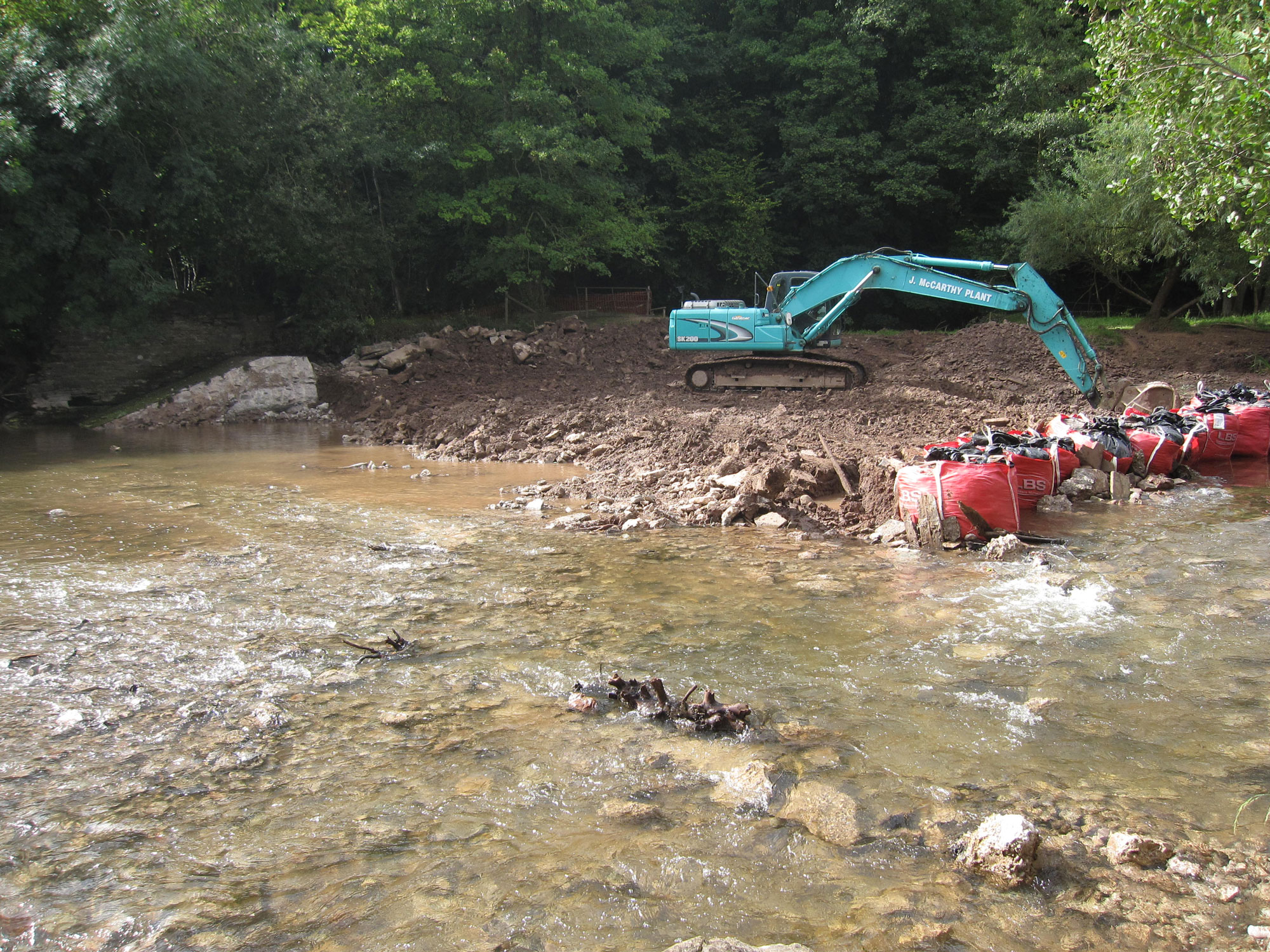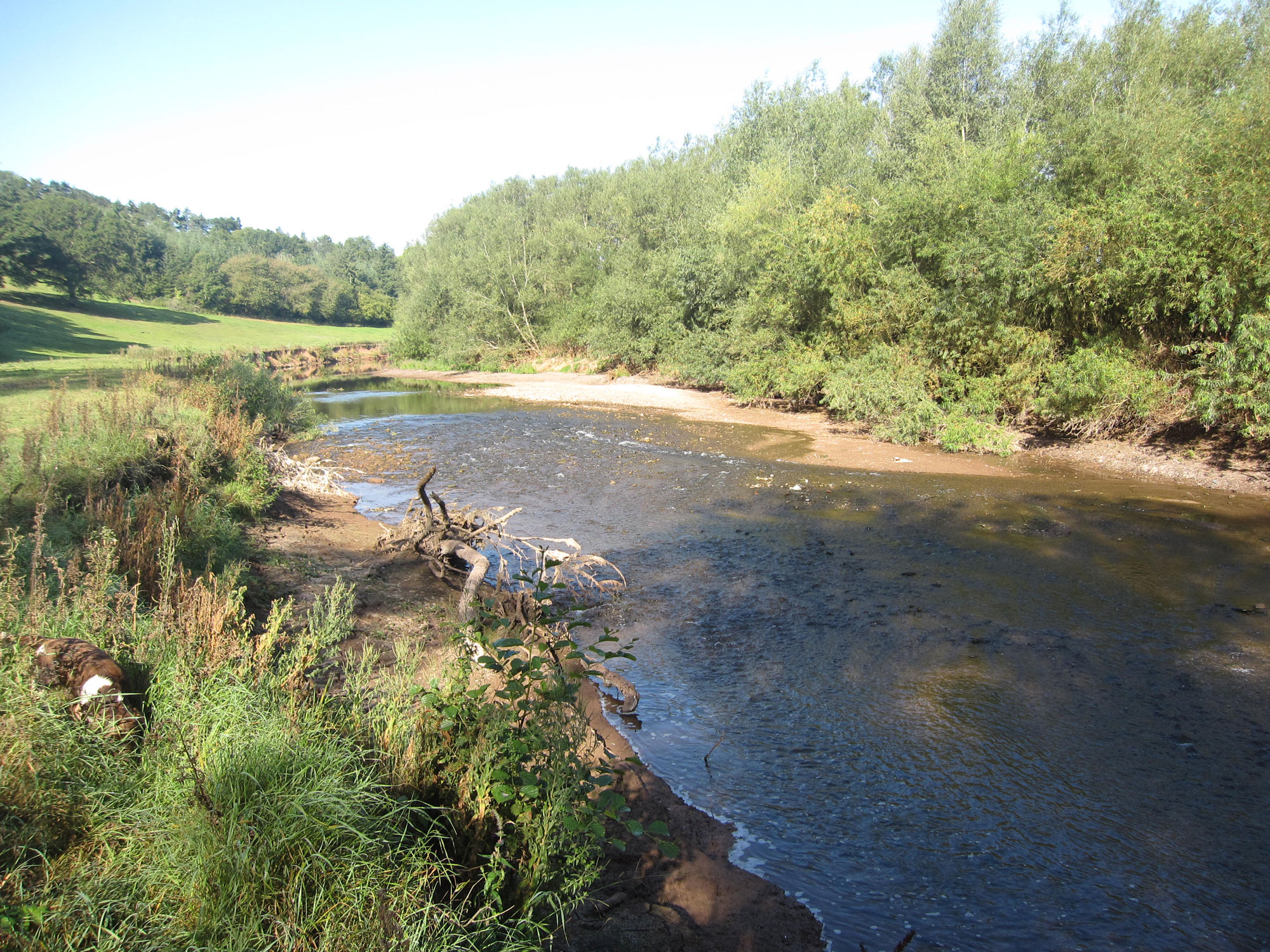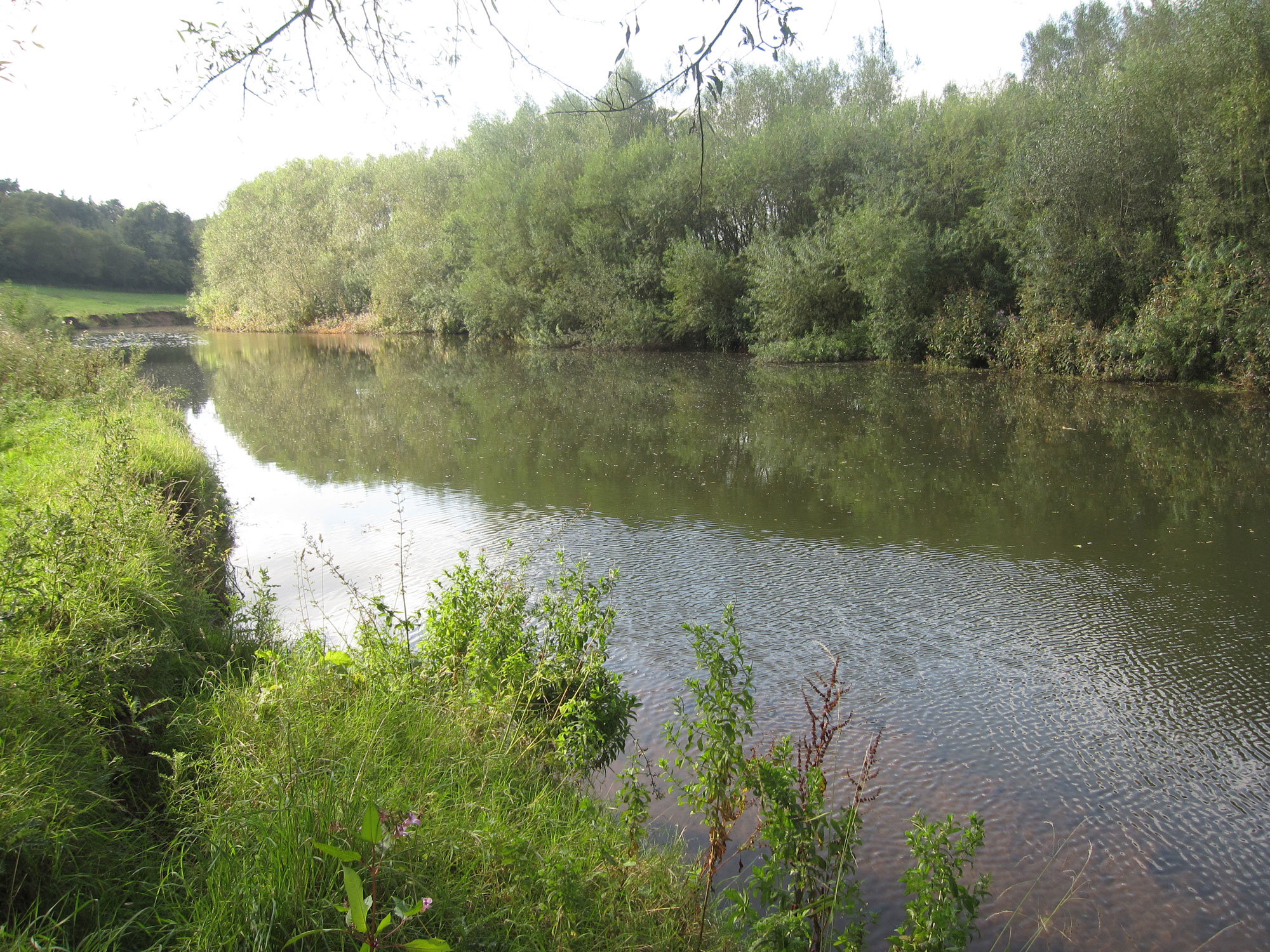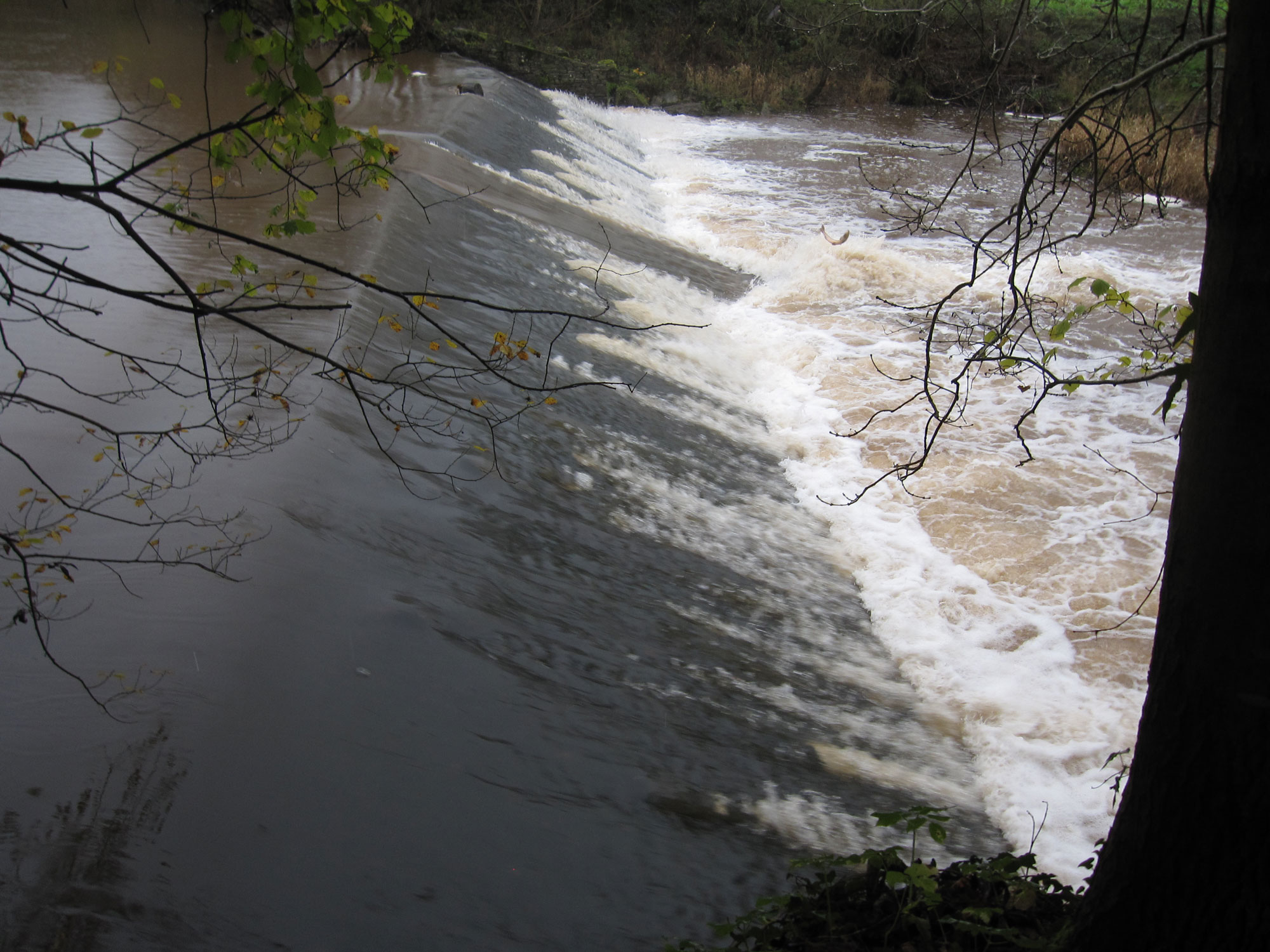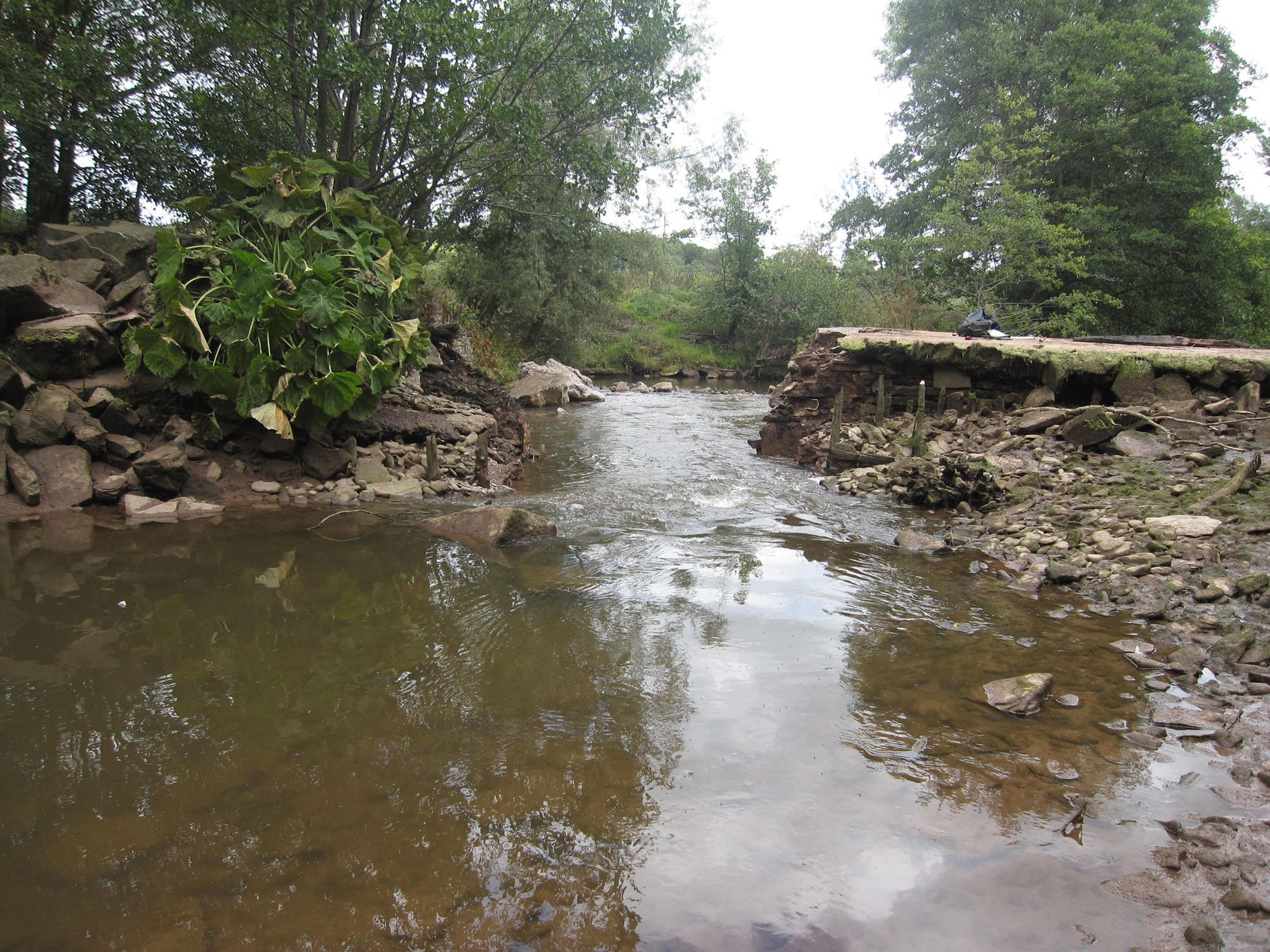Introduction
Kentchurch Weir was one of the last two remaining milling weirs on the River Monnow, a tributary of the River Wye in southeast Wales (within the Severn River Basin District). Over the past century, ten weirs in this tributary were destroyed during floods or they were removed. Originally, the weir supplied water to a local mill. But for the past 40 years it has not supplied water and has deteriorated due to lack of maintenance showing signs of breaching on both banks. The weir prevented upstream migration of fish in the catchment, thereby excluding diadromous fish from approximately 100 km of functional habitat.
The weir was located in a very rural area and its removal was proposed by the owner of the structure and supported by the owner of the adjacent land and river users. Removal was carried out using standard techniques: a partial breach of the weir and gradual lowering of the upstream water level and removal of some of the stored sediments. The remainder of the weir was then removed, whilst ensuring minimal disturbance of stored sediments.
Good communication with river users, including trout anglers, was maintained throughout the project to ensure thorough briefings on progress and outcomes. Good relationships were maintained throughout the whole project process.



